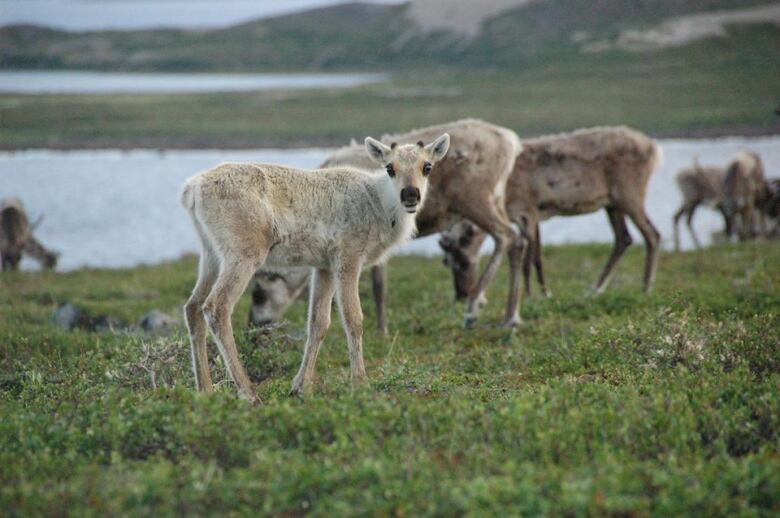Is it time to start protecting caribou habitat from forest fires? N.W.T. Mtis leader says yes
Fire is good for buffalo but it's no good for other animals, says Arthur Beck

Asforest fire season continues in the Northwest Territories, a Mtis leaderisraising long-standing concerns about the effect those fires are having on the habitats of the territory's beleaguered caribou herds.
- Bathurst caribou herd could be down to 16,000 animals, says gov't
- Wek'eezhii board recommends total ban on hunting Bathurst caribou
Typically, residential areas, high-value commercial forests and recreational sites are top priorities for organizing firefighting efforts. Protecting wilderness parks and remote forests of limited economic value many including caribou grazing grounds isalower priority for the territorial government.
The government's forest fire management strategy recently was called into question byArthur Beck, president of the Fort Resolution Mtis Council.
Beck says he is worriedabout the effect fires are having on woodland caribou populations. His concern is that fires could destroy the main source of food for caribou:lichens.
He says caribou, like most animals, avoid burned areas for a reason.
"Fire is good for buffalobut it's no good for other animals, and it's no good for the soil and the rock country," said Beck. "It burns everything up and ashes go right through the ground, so there is nothing for to grow on."
However, Frank Lepine, the territory's directorof forest management, says that people need to understand the importance of forest fires and their role in nature, as well as the "ecological benefits" that come with wildland fire.
Every fire in the territory is evaluated, he said, but not every fire should be put out.
"Fires shouldn't be fought in a lot of areas," Lepine said.
"Wildlife and caribou and other animals are well adapted to that. When you interfere in that process, it can be more devastating."

Planning underway
The Department of Environment and Natural Resources is developing range plans for both the barren-groundcaribou and boreal caribou populations.
"Part of the planning process examines the potential impact of wildland fire on caribou habitat, and explores whether it is feasible to increase the effectiveness of fire response and mitigation in some habitat areas," adepartment spokesperson told CBC in an email.
Some of the groundwork for the Bathurst caribou range plan has already been completed. In 2018, the same process will get underway for the boreal caribou.
Jody Pellissey, the executive director of the Wek'eezhii Renewable Resources Board, said every region in the N.W.T. will have to develop a caribou range plan, and those plans will include how to manage forest fires to protect caribou habitats.
"The expectation here in the N.W.T. is they will be regional plans," Pellissey said.
"There'll be one for the Wek'eezhii, there'll be ones for the Sahtu, Deh Cho, all the way up to Inuvik and then south to the border in the South Slave region. They will make up one big range plan, but regionally they'll be separate."
This fall, the Department of Environment and Natural Resources expects to release a framework for boreal caribou range planning for public review and comment.
Currently, the territorial government is monitoring boreal caribou populations in six regions: Dehcho North and South, the Hay River Lowlands, Pine Point, the Mackenzie Bison Sanctuary, and Wek'eezhii.
With files from Marlene Grooms, Jamie Malbeuf, Joanne Stassen, and Melinda Trochu












_(720p).jpg)


 OFFICIAL HD MUSIC VIDEO.jpg)
.jpg)



























































































